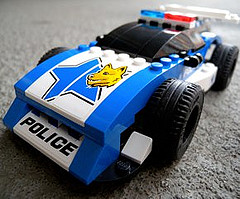The term “talking head” often refers to a presenter who does not engage or connect with the audience. The presentation seems like nothing more than a slew of words coming from a head on stage. How can you learn to connect with your audience and involve everyone in the topic? Easier said than done. This blog explores many ways to avoid being called the “talking head.” Today we look at engaging your audience with a strong opening.
Interesting stories and factoids are a simple way to connect with your audience. Get your listeners involved by telling an interesting story that relates to your topic. I have a colleague who tells the story of fleas in a jar. You can put fleas in a jar and they will jump high enough to escape the jar. But when you put a lid on the jar, the fleas learn that the top of the jar is the maximum height they can jump. When you take the lid off the jar, the fleas will no longer jump out of the jar. You can relate this to many topics. I have adapted this story to use when talking about getting people to break out of current molds and reach for higher performance goals.
Beyond stories, experiential learning activities are a great way to start a presentation. Some would call these “icebreakers,” but a well-planned activity is so much more than that. These are sessions that engage all the senses, hook the audience and can be referenced throughout the presentation.
Lego building blocks provide a good foundation for creating an experiential learning activity that engages all the senses. This activity always gets rave reviews.
- Preparation: For every 5-7 people in your audience, purchase a small Lego kit with no more than 25 pieces. Make sure the box includes a photo of the fished product and instructions. I like to choose small trucks or cars, as people love to build something that that can roll.
- Give very simple instructions to your audience that they are to do something such as, “Build a race car that rolls.”
- Separate the audience into groups and hand out the boxes. The clincher: give some groups a box of Lego bricks with the instructions, give some only the blocks and the picture of the truck and give the rest of the groups only the Lego pieces.
- Give the teams 10-15 minutes to build the race car. You are bound to have many variations of the car. Observe the interaction within the teams for debrief.
 When this activity is done, you will have numerous lessons learned that could tie to a presentation topic. Results are bound to support a discussion about better communication and improving teamwork, providing consistent instructions, tools and processes. It also inevitably shows the creativity of a few groups that make a very basic truck and often are the first to finish.
When this activity is done, you will have numerous lessons learned that could tie to a presentation topic. Results are bound to support a discussion about better communication and improving teamwork, providing consistent instructions, tools and processes. It also inevitably shows the creativity of a few groups that make a very basic truck and often are the first to finish.
Whether you open with a story, interesting factoid, or an experiential learning activity – plan a high impact opening. You only have one chance to open your presentation with a bang!
Good ideas and a great vision are not enough to be successful today. Winners need an authoritative, convincing, articulate presentation. Fast Track Tools offers resources to help. After completing the Communicate to Win workshop, you will know how to outline your plan and how to get where you really need to go. With this complete package, you gain the tools necessary to guarantee that you have the best ideas and that you can present them confidently so you will WIN.
Keep up-to-date with Fast Track Tools on Twitter @fasttracktools and join our Facebook community!
photo by Katrina Snaps

Ken,
This is a very powerful article. Strongly engaging an audience or customer is one of the most important skills of my job. I put a great of effort preparing for my first engagement with a new group or customer because it is often the only time I meet face-to-face with them. It is my greatest opportunity to instill confidence regarding skill and leadership with them.